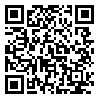جلد 35، شماره 1 - ( 1-1403 )
جلد 35 شماره 1 صفحات 57-38 |
برگشت به فهرست نسخه ها
چکیده: (797 مشاهده)
The automobile workshop queue system has been optimized using various approaches, such as queuing theory, simulation, and probability. The utilization of response surface methodology (RSM) for optimizing automobile workshop queue systems is not yet established. The utilization of RSM with direct observation enables the detection of patterns of correlations between variables and responses, which are then represented through mathematical equations. The optimization process involves numerous factors that impact queue performance, which can be categorized into two parts. The number of servers, number of phases, number of workers, worker experience, and layout are classified in inner design. This study examines the relationship between two components of the outer design, specifically the arrival rate and the interarrival time. The responses analyzed are queue cost, service time, average customer waiting time, and number of customers. The findings indicate that queue costs are not reliable for establishing the optimum value due to the significant impact of the cost structure on the structure of the optimal location. This study discovered that the number of leaving customers is related to queue costs and is relevant in selecting the optimal point. This study also formulates mathematical equations for predicting the optimal point. This study emphasizes the necessity for further investigation to uncover alternative mathematical equations that can precisely predict the optimal conditions for various types of services.
نوع مطالعه: پژوهشي |
موضوع مقاله:
Optimization Techniques
دریافت: 1402/10/5 | پذیرش: 1402/10/23 | انتشار: 1402/12/21
دریافت: 1402/10/5 | پذیرش: 1402/10/23 | انتشار: 1402/12/21
| بازنشر اطلاعات | |
 | این مقاله تحت شرایط Creative Commons Attribution-NonCommercial 4.0 International License قابل بازنشر است. |

